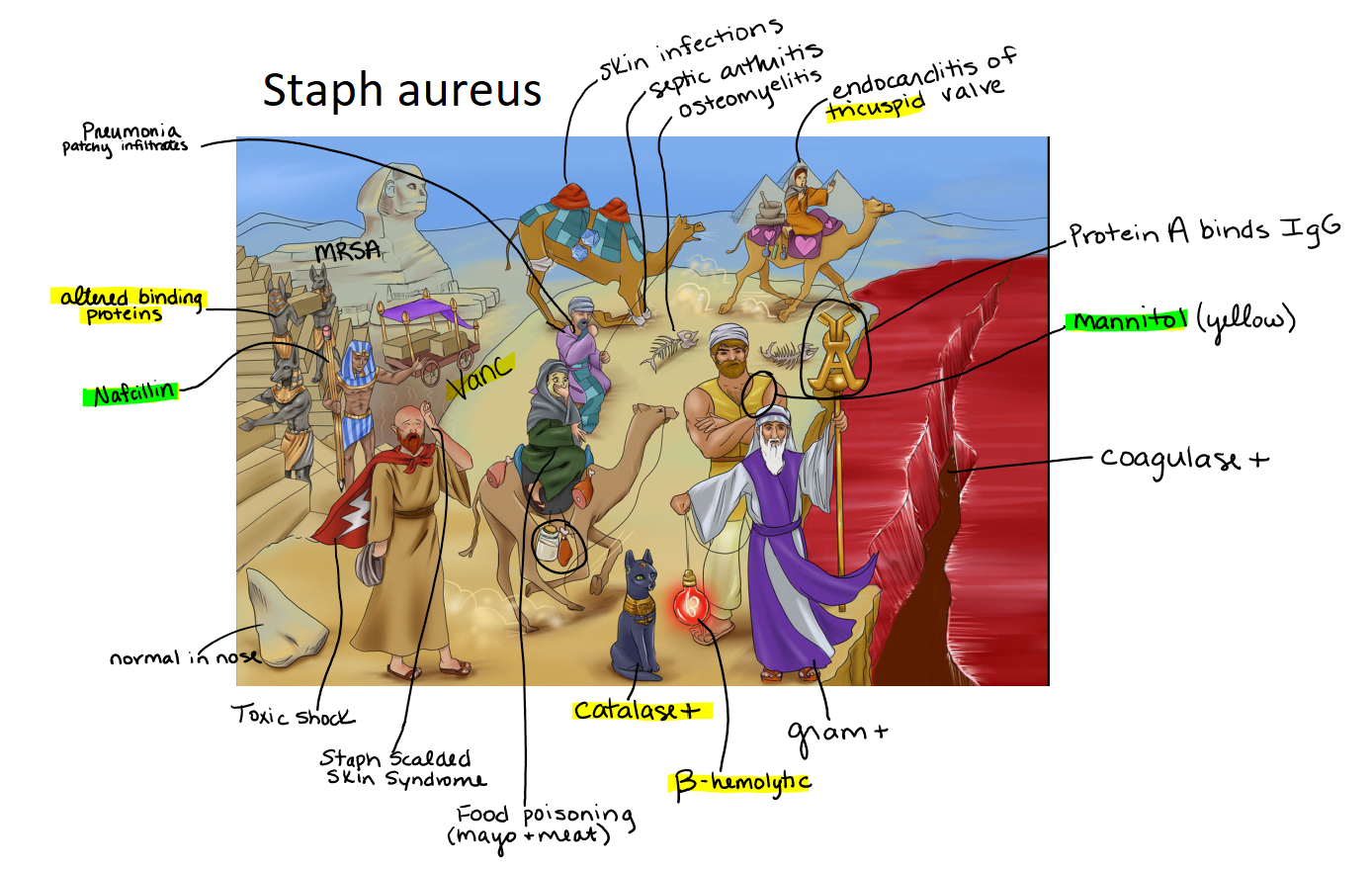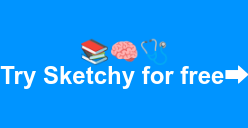Sketchy is a fantastic learning resource! You learn quickly and by using symbols you have embraced, it stays in your memory longer. You’ll enjoy watching Sketchy videos, but the critical step is to keep that information in your brain for as long as you need it-in other words, retention. This article will cover different study strategies to keep those memorable cartoons stuck in your head.
So what’s up with this whole “retention” thing?
 The moment I realized I was not successfully retaining information as well as I wanted was when a professor remarked, “You should already know the coagulation cascade, we went over it a couple of months ago.” Immediate dread filled my body, because understandably, I did not have that long pathway memorized. Instead of retaining, I crammed and released. Like a filing cabinet with fixed space, new info was coming in the front, while old info was falling out the back.
The moment I realized I was not successfully retaining information as well as I wanted was when a professor remarked, “You should already know the coagulation cascade, we went over it a couple of months ago.” Immediate dread filled my body, because understandably, I did not have that long pathway memorized. Instead of retaining, I crammed and released. Like a filing cabinet with fixed space, new info was coming in the front, while old info was falling out the back.
Something that becomes immediately clear to graduate students is that information learned must also be retained. As a medical student, the curriculum that I spend so much time stuffing into my brain needs to remain in my brain for my whole career (or at least for a couple of years until I take boards). Contrast this to undergrad where I could cram in amino acids, take a test, and forget them next week. The stakes are higher and the race is longer.
What’s the secret to retention?
The key is this: interact with the material. This was a lesson that took me months to learn, but once I did, medical school became more enjoyable. I categorize learning into different levels of quality. The first level is passive learning. This includes reading material, highlighting, or listening to a lecture. It’s coming into your brain, but that is about it. This kind of learning lasts me a couple of days, and is great for things that you won’t need to know for long periods of time. This method takes the least amount of effort.
The next level is active learning. This level includes but is not limited to: synthesizing in your own words, using flashcards, or teaching the subject to someone else. Anything that gets you interacting with the material. This level lasts me about two weeks.
The final level is spaced repetition. Once you have learned something, you must review it before you forget it. The Forgetting Curve shown below helps you conceptualize that spaced repetition is needed for long term retention, and so, a portion of my time every day is spent reviewing information I have already learned. Using spaced repetition and Sketchy I can remember something forever (in theory at least).

So how can I use Sketchy to retain?
I’m so glad you asked! I have graduated through all three levels of retention while using Sketchy, and you can too based on your needs.
- Passive learning is watching the video.
- For active learning I used this strategy: I would watch the video, copy and paste it into a page, and make written notes on it. This got me interacting with the material. I would use different colors to highlight information I didn’t have memorized yet so that as I got closer to the test, I could review what I did not know. An example of the Staph Aureus sketch is below:

- To integrate spaced repetition, I graduated to using Anki. Anki is a free spaced repetition flashcard program. You can use pre-made cards or make your own. Anki has its own algorithm for when it shows you a flashcard again, so it keeps you in the timeframe of the Forgetting Curve. Below is an example of a flashcard I made for my pediatrics clerkship using the Sketchy video. I included the portion of the video that had the memory hook for the fact I was trying to learn.

There are more ways to transition to active learning with Sketchy material, like Sketchy’s workbooks or the quizzes that Sketchy provides as a way to test yourself. These allow you to INTERACT WITH THE MATERIAL, which as we know is the key to success.
Now that you have the tools to use Sketchy to your full advantage, I know that you will absolutely crush it on your tests and boards. By using methods of studying that prioritize long-term retention, Sketchy will live on in your brain for years to come. Viva Sketchy!
